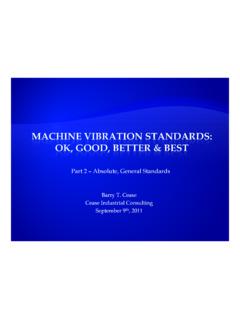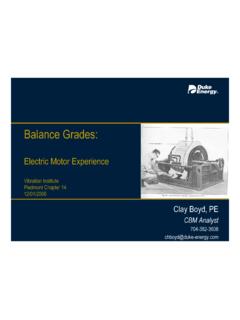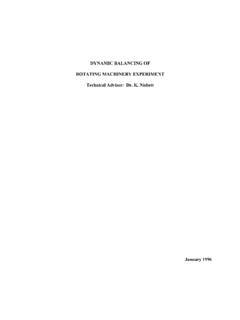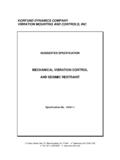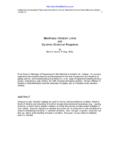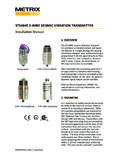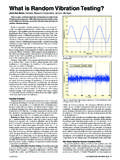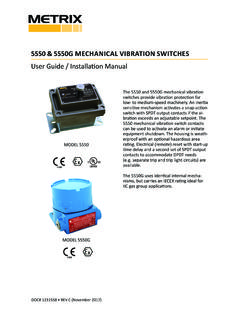Transcription of Piedmont Chapter Vibration Institute Training Symposium …
1 Piedmont Chapter Vibration Institute Training Symposium 10 May, 2012 FIELD BALANCING OF ROTATING MACHINERY Presenter: William T. Pryor III Senior Technical Director PdM Solutions, Inc. Vibration Analyst Category IV Member VI Board of Directors 609-330-3995 Presentation is going to concentrate on setting up and performing a single plane balance using Vector and Influence Coefficient methods: up for success Weight Selection Weight Placement Plane Calculation Is Balance the Problem Technique and Strategy Unusual Problems Mass Unbalance Force Rotor Classification Balancing Techniques Pre-balancing Checks Trial Weight Selection & Location Balancing Pitfalls Single Plane Balancing Two Plane Balancing Balance Limits Conclusions Modern Techniques and Instrumentation Field Balancing an Indirect Process Analyst s Goals Beware of Black Boxes and Traps Mass unbalance (heavy spot) cannot be measured directly High spot (angular location of peak or peak to peak Vibration )
2 Is used to determine heavy spot Balancing is an art and science science in the vector procedures art in selection of balance planes, speeds, measurement locations as well as trial weight sizes and locations Balancing is a method of weight compensation to minimize Vibration Global weights added to compensate for local unbalances can introduce stress Is Balance the Problem? Beware of false indicators - Misalignment & Resonance Unbalance a Rotating Force Resonance and Flexible Structures Complicate the Picture Vibration Transducer Once-Per-Revolution Sensor Filter capable of measuring Speed, Amplitude, and Phase Marker or Paint Stick Polar Graph Paper and Triangles Balance Weights and Scale Rule #1 Keep it Simple Rule #2 Be Consistent Rule #3 Do not make up your own rules Rule #4 Remember the 1st 3 rules Before attempting to balance: Remember there are multiple reasons for a high 1X amplitude component.
3 Perform a complete analysis prior to balancing to ensure that other mechanical faults are not the cause of the 1X response. Misalignment Thermal Effects Product buildup on rotor Erosion or corrosion of rotor Bowed, bent, or eccentric shaft Bearing or seal wear Roller Deflection Paper Machines Machining errors/incorrect assembly Not properly balanced in shop Looseness in built-up rotor components Not mass unbalance Loose supports Frame misalignment Stiffness asymmetry Inaccurate data Thermal sensitivity Resonance Unbalance distribution rotating component did not go out of balance by itself. skeptical during the balancing process and use the balancing procedure as a diagnostic tool. balance attempt is not working as anticipated STOP and THINK about what is going on.
4 It may not be unbalance. 1)Number Fan Blades or Holes 0 to N. As an example: if there are 8 Blades, Blade 0 is also Blade 8 (0 to 360 Degrees). Blade # s will increase in sequence by turning the rotor in the direction of rotation. 2)Install Vibration measurement sensor Inline with Blade 0 3)Install Once-per Rev timing mark and sensor when Blade 0 is inline with measurement sensor. 4)Make a drawing showing blades, transducer placement, and angles. Remember angles increase against rotation. 5)Determine trial weight amount and have weight available. When we balance a rotor there are 2 unknown factors which need to be determined in order to solve a rotor balance problem. 1)The amount of weight required 2)Angle of weight placement Speed of the machine Radius of weight placement Rotor mode shape relative to balance plane selected Proximity to Rotor Balance Resonance (Critical Speed) Balance trial weight selection should be based on 1 of the following: A: User experience with the same or like machine.
5 B: Experience with similarly designed and constructed machine. C: In the absence of above, a trial weight is calculated to generate a centrifugal force equal to 10% of the rotors weight. Note: For rotors operating above 3600 some suggest that a calculation yielding 5% of the rotors weight should be used as an initial trial weight. Centrifugal Force: Cf = m r 2 Cf = Centrifugal Force Lbf m = Mass of the rotor = Weight/Gravity = in/sec2 Note 1 G = Ft/Sec2 = in/sec2 r = Weight add radius in inches = Rotor speed in radians Calculate the size of the trial weight needed for an electric AC motor operating at 1785 RPM. The rotor weighs 1800 pounds and the weight can be added to the rotor at a radius of 6 inches.
6 The easiest way to treat this problem is to break it down into a couple of parts. 1st we want our trial weight to generate a force equal to 10% of the rotor weight. So from our example: Cf = 1800 Lb Rotor/10 = 180# 2nd Our weight add radius is 6 3rd We need to calculate the speed of the rotor in radians. 1785 RPM * 2 = 60 sec/Min = [2 ( Hz)] = [2* * Hz] = Radians/Sec Note: 1 Radian = 2 = 360 Degrees 2 = ( )2 = ( * ) = Radians/Sec2 Centrifugal Force: Cf = m r 2 __Cf __ m = r 2 _____180#_____ __#___ m = (6 )( radians) = in/sec2 m = W/G solving for weight: W = M * G = ( #/in/sec2)( in/sec2) W = Lb W = Lb * 16 Ounce/Lb = Ounce where: WT = trial weight, oz.
7 R = eccentricity of trial weight, in. W = static weight of rotor, lb. N = speed of rotor, RPM where: WT = trial weight, oz. r = eccentricity of trial weight, in. = 6 W = static weight of rotor, lb. = 1800# N = speed of rotor, RPM = 1785 RPM Wt = (1800 #) = Oz. (1785 RPM)2 * 6 Proximity to Rotor Balance Resonance (Critical Speed) (relationship of rotor high spot to heavy spot) Rotor mode shape Initially the angular relationship of the Heavy Spot to the High Spot is unknown. Vibration Institute Balance of Rotating Machines Vibration Institute Balance of Rotating Machines Below resonance add 1800 At resonance add 900 Above resonance add 00 If unknown it is usually safe to add 900 Remember the purpose of a trial weight is to cause the rotor to display a reasonable amplitude and/or phase change compared to the initial unbalance run.
8 An amplitude and/or phase change is required in order to perform the balancing calculation. An amplitude change of 10% or phase change of at least 150 is desired. initial set of 1X amplitude and phase data. Note: Log 1X data in vertical, horizontal, and axial directions at both bearings. down machine and observe 1X amplitude and phase during shutdown to determine proximity of running speed to resonance. Initial 1X vector on Polar graph paper out machine. trial weight angular placement. Show trial weight magnitude and placement on polar graph. trial weight to rotor. locks machine and log 1X amplitude and phase at all locations. (Trial Run). machine and lock out equipment. TRIAL WEIGHT 11. Draw Trial Weight vector on polar graph. 12. Perform balance calculations to determine magnitude and angle of corrective weight.
9 13. Attach weight to machine. 14. Release locks and run equipment. 15. Log 1X amplitude and phase at all locations and evaluate data. Did 1X amplitudes decrease at all locations. If not, this may not be just a balance issue. Is a trim run required to reduce levels to desired magnitude. 16. For trim run use Sensitivity/Response Vector to calculate trim balance correction, lock out machine and repeat steps 13-15 Note: If amplitudes do not decrease following trim balance it is probably not a mass unbalance problem. Review data! = Initial Vibration Response ( Mil @ Angle) = Trial Weight Placement (Weight @ Angle) = Trial Weight Vector = A + Effect of Trial Weight (Mil @ Angle) = Trial Weight Effect = B - A (Draw a line from the head of the A to the head of the B vector.)
10 Measure the magnitude of C the Rotor Sensitivity to weight = S = TW/C (Weight/Mil) the Correction Weight = (Sensitivity) (Initial Response) the angle between C and A. (This is the number of degrees that weight must be rotated from Trial Weight location) arrow from C to A. (This is the direction to move final balance weight from trial weight location) the final balance weight location on the polar graph. location of rotor heavy spot on the graph. the angle (Lagging) from the Initial Vector (A) to the location of the installed Corrective Weight (CW). This is the angle of the Sensitivity Vector. The Corrective Weight is at the rotor Light Spot. this measured angle with the calculated rotor sensitivity to weight. (Weight/mil @ Angle). This vector is the Rotor Sensitivity Vector.



